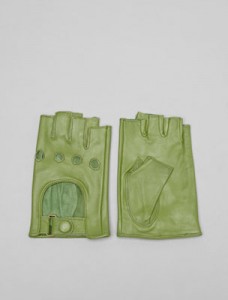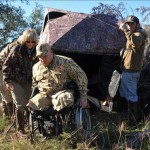It’s been a while since I’ve posted. What can I say, I got married and have been having a ball. Seriously, I have. But I also had to take a step back and prioritize my priorities – if there even is such a thing.
While I have always been an “animal lover,” this past year has been an awakening for me in the animal rights and rescue movement, one of which I think I have been emotionally committed to, but am now physically, too. Friends often ask me when I became “like this.” The question, I believe, is a delicate way of not really knowing what to call it.
Though I haven’t eaten meat since I was 18, I only gave up chicken and turkey this year. In Nigeria, where I was born and raised, I was vaguely aware that animals were not treated kindly, and that affected me. Even my family’s dogs, German Shepherds, were banished to the outdoors to sleep at night. Goats were hung and slaughtered under the large tree adjacent to the sandbox that I played in. As a result, it was a constant struggle to get me to eat goat meat. That explains the vegetarianism.
When I was 24, I saw a man beat a stray dog with a wooden pole in the streets of Casablanca. I pleaded with him to stop in broken-Moroccan (French and Arabic), which only enraged him more. “A woman telling me what to do? An American, no less,” is what I imagined did it. That explains my growing interest in Dominion and how it pertains to animals — and those who know me, know I am not a religious person. Convincing other cultures, where often animals are far worse off than they are in the United States, that an animal has rights, as I tried with the Moroccan man, does not work. Matthew Scully, the author of Dominion, The Power of Man, the Suffering of Animals, and the Call to Mercy says that only conscience, perhaps only the fear of God Almighty, could make such a man draw back.
Not long ago my mother gave me a stack of papers that my late-grandmother had kept of all my letters, cards and writings over the years. Within the papers, I found what is perhaps most telling about my awakening: A fiction story I wrote in elementary school about an injured frog that a little girl discovers while walking home from school one day. The girl brings the frog home in her coat pocket and conceals it in an empty shoe box for fear of her father finding out. She begins to nurse him back to health, or in the frog’s case, until he can hop again. She encounters a few close calls with her older brother who threatens to tell, and another with one of the household cats. Eventually the frog heals and she releases him into the wild in the woods behind the school yard. This explains my role in animal rescue. I was doing it at a tender age even in my subconscious, and am still doing it today.
So what does this all have to do with this blog which is about getting me to write rather than shop? It means that there is a good chance this blog could take a meandering course. So if you’re an old reader I hope you will forgive me, and if you’re a new one, I hope you will stay. While I will still shop and blog about the frivolousness of doing so, there is a good chance it won’t be about python-embossed Jimmy Choo’s. The move towards cutting all meat out of my diet is slowly being followed by converting my wardrobe and beauty essentials to socially-responsible, sustainable, vegan-friendly products.
It occurred to me that this was necessary when I bought a pair of Carolina Amato leather driver gloves late last year. They were gorgeous, fun and bold. But I overlooked the fact that they were made out of goat leather. When they arrived in the mail there was no denying that the gloves had the distinct, pungent smell of death. I put them on and cried. First, because I knew they had to go back, and second, because a new kind of awareness about shopping had been born.

 With the widest circulation of any newspaper in the country, I am appalled that this story has been been considered newsworthy by USA Today. Can’t volunteering with Big Brothers Big Sisters or perhaps at an animal shelter be more therapeutic than hunting? Does anyone else find it disturbing that these young men are going from one kind of killing to another? http://www.usatoday.com/news/health/2009-11-04-nature-veterans-injured_N.htm
With the widest circulation of any newspaper in the country, I am appalled that this story has been been considered newsworthy by USA Today. Can’t volunteering with Big Brothers Big Sisters or perhaps at an animal shelter be more therapeutic than hunting? Does anyone else find it disturbing that these young men are going from one kind of killing to another? http://www.usatoday.com/news/health/2009-11-04-nature-veterans-injured_N.htm







